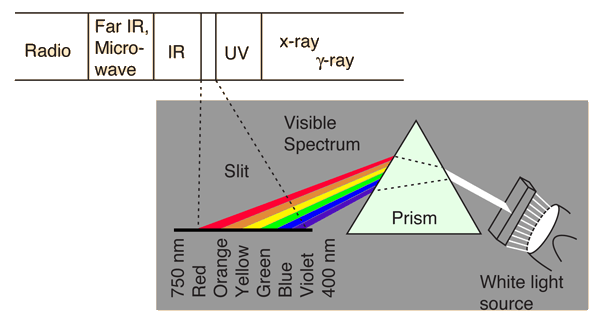Prisms
A refracting prism is a convenient geometry to illustrate dispersion and the use of the angle of minimum deviation provides a good way to measure the index of refraction of a material. Reflecting prisms are used for erecting or otherwise changing the orientation of an image and make use of total internal reflection instead of refraction.

White light may be separated into its spectral colors by dispersion in a prism.

Prisms are typically characterized by their angle of minimum deviation d. This minimum deviation is achieved by adjusting the incident angle until the ray passes through theprism parallel to the bottom of the prism.
An interesting application of refraction of light in a prism occurs in atmospheric optics when tiny hexagonal ice crystals are in the air. This refraction produces the 22° halo commonly observed in northern latitudes. The fact that these ice crystals will preferentially orient themselves horizontally when falling produces a brighter part of the 22° halo horizontally to both sides of the sun; these bright spots are commonly called "sundogs".
| Calculation |
| Polarizing prisms |
| HyperPhysics***** Light and Vision | R Nave |